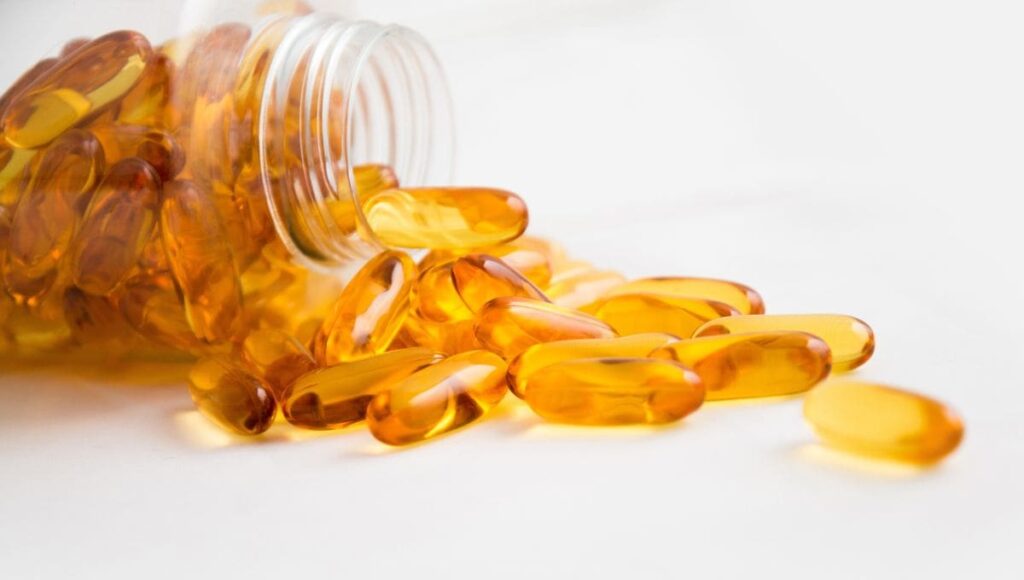See 5 honest ways to build muscle easier – meaning, you don’t need to go crazy or sort to surgeries and “black market” supplements to get the body you desire.
When the term “anabolic” comes to mind, it often conjures images of supplements or substances that may be perceived as potentially harmful. However, at its core, “anabolic” simply means pro-growth, particularly in the context of muscle protein synthesis.
In this extensive guide, we will explore various strategies, including unconventional methods, to enhance your sensitivity to protein, thereby promoting muscle growth. From specific types of cardio to the benefits of Omega-3s, vitamin D supplementation, the surprising impact of saunas, and the crucial role of magnesium, we’ll delve into the science and provide practical recommendations for incorporating these strategies into your routine.
The information on this article was largely based on the knowledge from Thomas DeLauer and what he said in a recent video. Thomas DeLauer is a celebrity trainer and health author. His YouTube Channel has 3.5 million subscribers and he has been on the cover of numerous international magazines.
Let’s check out 5 honest ways to build muscle easier according to DeLauer.
5 Honest Ways to Build Muscle Easier
- Cardio: An Unlikely Ally in Muscle Protein Synthesis

Contrary to conventional wisdom, certain forms of cardio, specifically aerobic and light interval-style cardio, have been shown to increase mTOR and overall protein synthesis. This unexpected finding challenges the perception that cardio is catabolic and highlights the potential benefits of including high-intensity interval training in your routine. Repeated contractions during aerobic exercise trigger cascades that decrease myostatin, leading to increased muscle-building potential. A recommended approach is to incorporate 20 minutes of light high-intensity interval training a few days a week post-resistance training.
How to Do HIIT Cardio to Get To 10% Body Fat
- Omega-3s: The Ultimate Anabolic Food
Omega-3 fatty acids, found in abundance in fish oil, are identified as a potent anabolic food. A study in the American Journal of Clinical Nutrition revealed that Omega-3s significantly stimulated anabolic signaling and protein synthesis when consumed alongside a post-workout protein source. Recommendations include supplementing with 1-2,000 milligrams of fish oil with post-workout meals and incorporating Omega-3 capsules with protein-containing meals throughout the day. Consider exploring quality meat sources, such as those provided by Butcher Box, for enhanced Omega-3 intake.
- Vitamin D: Harnessing the Power of the Sunshine Vitamin
Vitamin D, known for its role in bone health, also plays a crucial part in muscle protein synthesis. Research indicates that resistance training can increase the expression of vitamin D receptors, leading to enhanced anabolic signaling. Supplementing with 2,500 to 3,500 IU of vitamin D, especially if deficient, could be effective in supporting muscle growth.
6 Signs And Symptoms Of Vitamin D Deficiency
 Source: Pixabay
Source: Pixabay- Saunas: More Than Just a Heat Session
Surprisingly, saunas have demonstrated an ability to increase muscle mass. A 10-week study comparing sauna sessions with light aerobic intervals showed that only the sauna group experienced an increase in lean body mass. While saunas might not be accessible to everyone, the study suggested that hot baths could offer a similar benefit. Consider incorporating two sauna or hot bath sessions per week, each lasting 20-30 minutes, for potential muscle protein synthesis enhancement.
- Magnesium: The Overlooked Anabolic Mineral
Magnesium, often overlooked, has been linked to increased muscle protein synthesis. Studies have shown that higher serum magnesium levels are associated with less inflammation, more muscle mass, and improved leg power output. To optimize magnesium intake, experiment with chelated forms such as di-magnesium malate, gradually increasing the dose until you find your tolerable upper limit without experiencing diarrhea.
In conclusion, unlocking your anabolic potential involves embracing a holistic approach to muscle protein synthesis. The unconventional strategies discussed in this comprehensive guide go beyond traditional notions, shedding light on the diverse ways to stimulate muscle growth and enhance protein sensitivity. As you embark on this journey, it’s crucial to approach these methods with mindfulness, considering individual variations and consulting healthcare professionals when necessary.
By challenging preconceived notions about cardio, recognizing the profound impact of Omega-3s, leveraging the benefits of vitamin D, exploring the surprising anabolic effects of saunas, and acknowledging the importance of magnesium, you can tailor your approach to suit your unique needs. The key takeaway is that there’s no one-size-fits-all solution. Experiment with these strategies, monitor your body’s response, and adjust accordingly.
Remember that while these methods are supported by scientific research, individual results may vary. Factors such as genetics, overall health, and lifestyle play significant roles in determining how your body responds to these interventions. It’s essential to strike a balance, incorporating these strategies into a well-rounded fitness and nutrition plan.
 Source: Anya Juárez Tenorio on Pexels
Source: Anya Juárez Tenorio on PexelsHow to Increase Your Metabolism
Furthermore, always prioritize the foundational aspects of muscle growth, with protein intake remaining a cornerstone. Regardless of the methods employed to boost anabolism, adequate protein consumption is non-negotiable. Consider these strategies as supplementary tools to amplify the effectiveness of your existing routine.
In your pursuit of anabolic excellence, patience and consistency are key. Muscle growth is a gradual process that requires commitment and a sustainable approach. As you implement these strategies, monitor your progress, celebrate small victories, and adjust your approach as needed.
In the dynamic landscape of fitness and nutrition, staying informed about emerging research and trends is essential. Keep an open mind, be adaptable, and continue refining your approach based on your evolving understanding of your body’s responses.
Ultimately, unlocking your anabolic potential is not a destination but a continuous journey of self-discovery and improvement. Embrace the process, stay committed to your goals, and revel in the transformative power of optimizing muscle protein synthesis. The path to a stronger, more muscular you is within reach – seize the opportunity and embark on this empowering adventure.
For a more detailed explanation of these 5 honest ways to build muscle easier, you can simply watch the video below. In it, Thomas DeLauer goes further into each specific topic mentioned above.
How to Shed Fat, Get Lean and Stay Lean Using Science-Based Tips
Building muscle is a complex physiological process that depends on various factors, and several challenges contribute to the difficulty many individuals face in achieving substantial muscle growth. Here are some key reasons why building muscle can be challenging:
- Genetics:
- Genetic factors play a significant role in determining an individual’s ability to build muscle. Some people may have a genetic predisposition for greater muscle mass, while others may find it more challenging to gain muscle.
- Metabolic Rate:
- Metabolic rate varies among individuals, impacting how efficiently the body uses energy and synthesizes proteins. A faster metabolism might make it more difficult to consume enough calories to support muscle growth.
- Nutritional Challenges:
- Adequate nutrition is crucial for muscle growth. Building muscle requires a caloric surplus, with an emphasis on protein intake. Some individuals struggle to meet their nutritional requirements, hindering muscle-building efforts.
- Training Consistency:
- Building muscle requires consistent and progressive resistance training. Inconsistency, improper training techniques, or insufficient intensity in workouts can impede muscle development.
- Recovery and Rest:
- Muscles need time to recover and grow stronger after intense workouts. Lack of proper sleep, inadequate recovery time between workouts, and high stress levels can hinder the body’s ability to repair and build muscle.
- Age:
- Muscle-building potential tends to be higher during adolescence and early adulthood. As individuals age, hormonal changes, decreased protein synthesis, and a potential decline in physical activity can make it more challenging to build muscle.
- Hormonal Factors:
- Hormones, such as testosterone and growth hormone, play a crucial role in muscle development. Hormonal imbalances, either due to genetics or health conditions, can impact muscle-building capabilities.
- Individual Response to Exercise:
- People respond differently to exercise stimuli. What works well for one person may not yield the same results for another. Tailoring workout routines to individual preferences and responses is essential.
- Caloric Expenditure vs. Intake:
- Gaining muscle requires a caloric surplus, meaning you consume more calories than you burn. Striking the right balance can be challenging, especially for individuals with high metabolic rates or those engaged in intense physical activities.
- Lifestyle Factors:
- Sedentary lifestyles, excessive alcohol consumption, smoking, and poor dietary choices can negatively impact muscle-building efforts. Healthy lifestyle choices contribute significantly to overall fitness and muscle development.
Despite these challenges, it’s important to recognize that building muscle is achievable with the right approach, consistency, and patience. Tailoring workouts, optimizing nutrition, ensuring adequate recovery, and addressing individual factors can contribute to overcoming these challenges and fostering successful muscle growth.
Dieting vs. Exercise for Weight Loss – How Does it All Work?
10 Diet Mistakes That Are Ruining Your Muscle Gains
Image Sources
- Fish oil: Pixabay
- Biceps and abs: Anya Juárez Tenorio on Pexels
